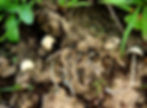The Top 5 Strongest Magic Mushroom Species Ranked by Potency
- chadwalkaden
- Nov 30, 2022
- 3 min read
Magic mushrooms come in all shapes and sizes, but which ones are the most potent? We rank the strongest magic mushrooms by potency.

Psychedelics are having a moment. Once relegated to the fringes of society, these mind-altering substances are now being studied for their potential therapeutic benefits. Among the most popular psychedelics is psilocybin, the main active compound in magic mushrooms. While all magic mushrooms contain psilocybin, there is significant variation in potency between different species. In this article, we’ll list magic mushrooms ranked by potency according to their psilocybin and psilocin content. But before we begin, let’s refresh our memory on the main active ingredients found in magic mushrooms.
Psilocybin and Psilocin
Psilocybin, found mainly in dried mushrooms, is a prodrug of psilocin. When metabolized by the body, psilocybin turns into psilocin and then causes hallucinations.
Psilocin is most commonly found in fresh mushrooms or lemon tek. Lemon tek is a process that uses lemon juice to convert psilocybin into psilocin. Psilocin is the psychedelic substance in mushrooms that directly interacts with the body.
1. Psilocybe azurescens

At the top of our list is Psilocybe azurescens. Dubbed as the world’s strongest magic mushroom, it definitely packs a punch —that is if you can find it. In its natural habitat, this fungi favors deciduous woodlands near the Columbia River in US West Coast.
A strong word of caution, higher doses of the so-called flying saucers can result in paralysis, although it is only temporary. If you're not expecting it, a stich of anxiety may creep in and as we all know, the experience could soon become the opposite of pleasant.
2. Panaeolus cyanescens

Panaeolus cyanescens, also known as Copelandia cyanescens or “The Hawaiian” is frequently mentioned as being even more potent than P. cubensis, with some reports saying it can contain two to three times the amount of psilocybin and psilocin.
Finally, a mushroom you can grow indoors! The intense trip and beginner-friendly nature make these mushies perfect for those just getting into mushroom culture. Often grown indoors from a pre-colonized grow kit, they thrive in dung wherever it's found around the world—which is why Panaeolus cyanescens kits use horse manure as substrate.
These mushies contain approximately 2.5% psilocybin and 1.94% psilocin, making them some of the most potent shrooms around.
3. Psilocybe semilanceata

Psilocybe semilanceata, more commonly known as “liberty caps”, are widely recognized for their prominent nipple-like feature and bell-shaped cap. They are the most widespread magic mushrooms in the wild, growing natively across 17 countries in Northern Europe.
These mushrooms are not your average fungi! The psilocybin levels in dried Psilocybe semilanceata samples have been found to be as low as 0.2% and as high as 2.37%. These magical little creatures boast the highest levels of psilocybin ever measured; however, the average concentration is only 1%.
4. Psilocybe cyanescens

Psilocybe cyanescens, or wavy caps, is a species of potent psychedelic mushroom that's become increasingly widespread due to people using mulch more often to suppress weed growth.
These mushrooms are native to Central Europe and the Pacific Northwest, but they can now be found all over the world. They’re known to prefer environments with woody debris such as chips or gardens but can also grow outside if there are proper conditions (such as plenty of dead trees).
Wavy caps are notoriously potent; they can contain 0.3 to 1.68 percent psilocybin, and 0.28 to 0.51 percent psilocin. When lucky enough to find them in the wild, people may discover these mushrooms thriving on trees. The caps are typically small and green before they grow into an enormous patch of wavy brown-coloured flesh that retains more potency when eaten fresh as opposed to dried. Although not as intense, dried wavy caps still produce profound effects.
5. Psilocybe bohemica

Psilocybe bohemica is found primarily in the Czech Republic and Central Europe. This region was historically called Bohemia. The mushroom bears many similarities to Psilocybe serbica, which is found in the Balkan region. When dried, the concentration of psilocybin ranges between 0.11% and 1.34%. A word of caution for those foraging for these mushrooms —they are easily confused with the Galerina, which is a highly poisonous fungi.
Don’t consume anything that may be dangerous to you!